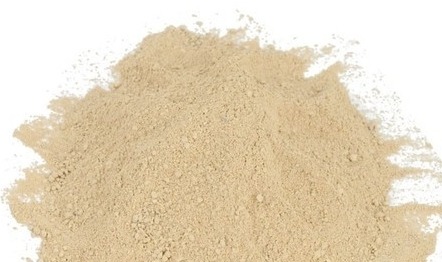IUPAC Name
Pentacalcium fluoride triphosphate
Cas Number
1306-05-4
HS Code
25102010
Formula
Ca5(PO4)3F
Industry
Fertilizers
Appearance
Light Brown Powder
Common Names
Phosphorous ore, Fluoropatite, Apatite
Packaging
25 Kg Bag
Rock phosphate, or phosphorite, is a solid substance that has a high phosphorous content. Some phosphate rocks are used to make calcium phosphate nutritional supplements for animals. However, the role of phosphate rock in the production of phosphate fertilizers for agriculture is highly vital. A large percentage of the common fertilizers have an “N-P-K” rating. The P stands for the phosphorous component in fertilizers. Phosphorus is required to help plants capture the sun’s energy and begin the photosynthesis process.
Rock phosphate may occur as high-grade ore (> 30% P2O5), medium-grade ore (20%–30% P2O5), and low-grade ore (15%–20% P2O5). The very high-grade ore blends with medium-grade ore for direct sale. The high-grade ore is mined, crushed, and sold to various fertilizer plants. The low-grade ore is beneficiated by reverse/inverse flotation techniques.
Phosphate ore is mined and converted into rock phosphate. The conversion of phosphate ore is a process which includes washing, flotation and calcining. Froth flotation is used to concentrate the mined ore to rock phosphate. The mined ore is crushed and washed, creating a slurry, this ore slurry is then treated with fatty acids to cause calcium phosphate to become hydrophobic.
Rock phosphate, or phosphorite, is a solid substance that has a high phosphorous content. Some phosphate rocks are used to make calcium phosphate nutritional supplements for animals. However, the role of phosphate rock in the production of phosphate fertilizers for agriculture is highly vital. A large percentage of the common fertilizers have an “N-P-K” rating. The P stands for the phosphorous component in fertilizers. Phosphorus is required to help plants capture the sun’s energy and begin the photosynthesis process.
Rock phosphate may occur as high-grade ore (> 30% P2O5), medium-grade ore (20%–30% P2O5), and low-grade ore (15%–20% P2O5). The very high-grade ore blends with medium-grade ore for direct sale. The high-grade ore is mined, crushed, and sold to various fertilizer plants. The low-grade ore is beneficiated by reverse/inverse flotation techniques.
Phosphate ore is mined and converted into rock phosphate. The conversion of phosphate ore is a process which includes washing, flotation and calcining. Froth flotation is used to concentrate the mined ore to rock phosphate. The mined ore is crushed and washed, creating a slurry, this ore slurry is then treated with fatty acids to cause calcium phosphate to become hydrophobic.
